#early 19th century fashion
Photo
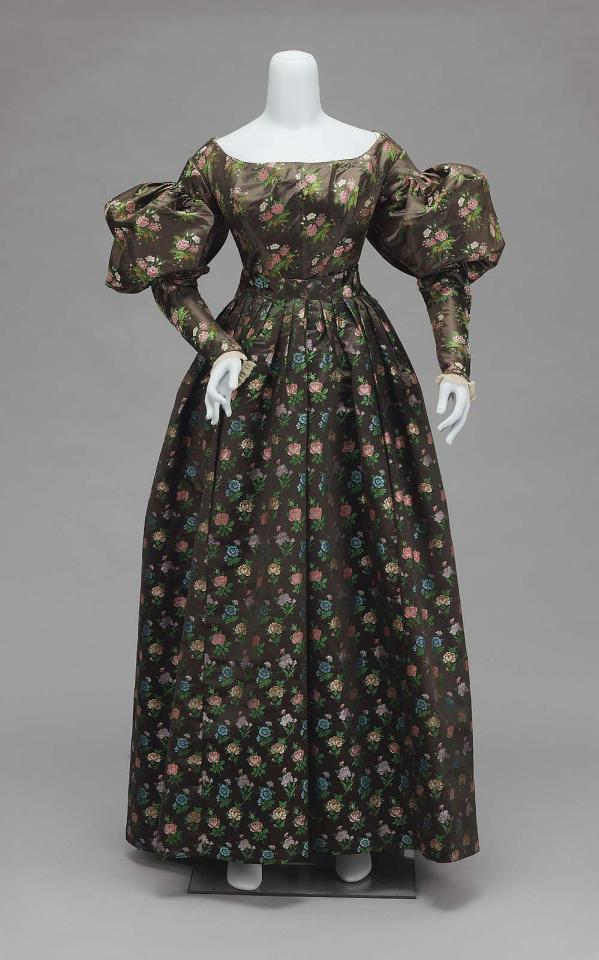
Woman’s dress (United States, 1825-1830).
Silk brocaded satin, net trim, and linen lining.
Image and text information courtesy MFA Boston.
201 notes
·
View notes
Text
Hey friends!
When I start Project Regency Gentleman, should I dedicate a blog/twitter/instagram/*shudder* tiktok to the process? Is that something people would be interested in, or should I just leave it on this blog?
I'm planning to make relatively detailed posts about the step by step process of making the clothes, including making muslins of things to check fit
#historical fashion#regency#age of sail#napoleonic wars#georgian era#regency era fashion#late georgian fashion#19th century#early 19th century#19th century fashion#early 19th century fashion#project regency gentleman#thiefbird sews
11 notes
·
View notes
Text
The Resplendent Outfit: The outrageous, extravagant, often humorous, and sometimes beautiful outfits worn by the subjects of old portraits; a little history occasionally thrown in the mix.
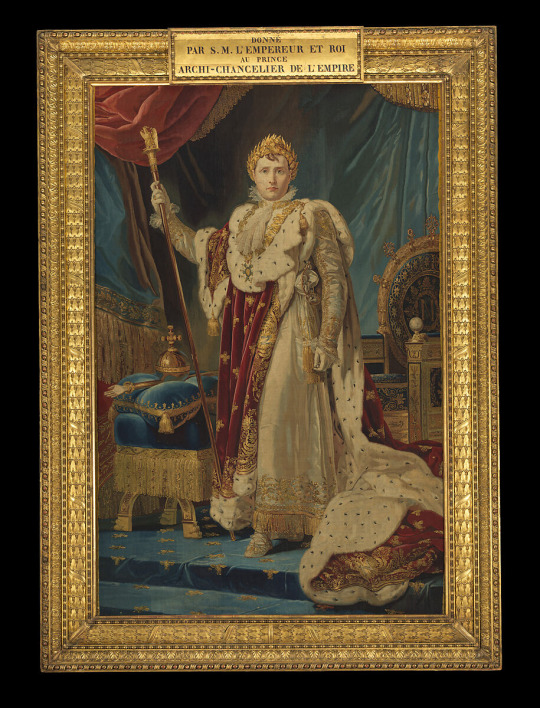
François Gérard (French, 1770–1837) • Portrait of Napoleon I in coronation robes • Between 1805 and 1815 • Rijksmuseum, Amsterdam, Netherlands
Although Napoleon's attire in the portrait above was reflective of a man of his status and power, the style for other men went toward breeches to the knee but with the addition of pantaloons tied just below the knee, reached the ankle; a relatively new development that replaced the breeches to the knee worn with stockings.

William Owen (British, 1769-1825) • Portrait of a Man • c. 1815 • New Haven, Connecticut: Yale Center for British
The man in the portrait above is wearing country or morning attire of breeches (usually made of wool, cotton, or buckskin), tied below the knee with laces, a clawhammer coat, and riding boots.
Around the 1790s, the tail coat changed and breeches began to be lengthened below the knees to accommodate the longer tails, gradually giving way to slimmer fitting, longer pants, or pantaloons, that ended at the ankle. Pantaloons were close-fitting and sometimes buttoned all the way down the leg. Fabrics were knitted or, like kerseymere (a wool with a fancy twill weave) and nankin (a type of cotton), cut on the bias, so that the garment would hug the leg – a shapely leg was a desirable attribute of a fashionable man.
This longer pant marked a transition from previous eras where the breeches were shorter and worn with hose. The jacket style of the late 1700s into the 1800s was instrumental in this transition, being short at the waist in front, with a long back or tails.
#early 19th century fashion#male fashion history#napoleon portrait#coronation portrait#peter paul rubens#william owen#historical portrait#the resplendent outfit#painting#history of pants
9 notes
·
View notes
Text
btw been trying to watch episodes of gentleman jack without getting the urge to write 19th century lesbian fiction and i'm barely succeeding
#it's combining three things that i love#early 19th century fashion#great scripts#lesbians#canines#howls
3 notes
·
View notes
Text

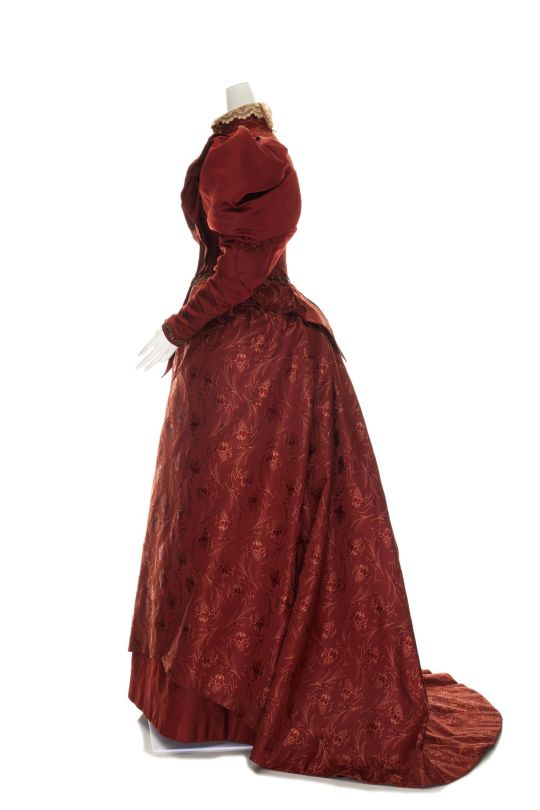
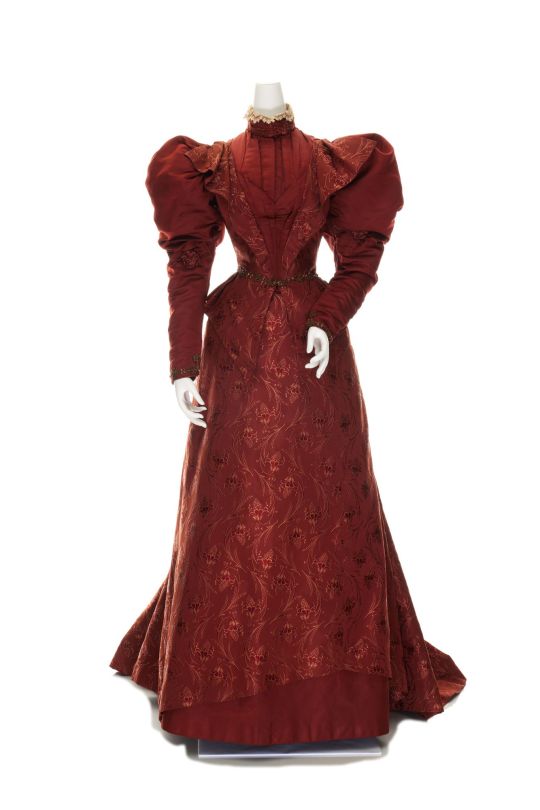
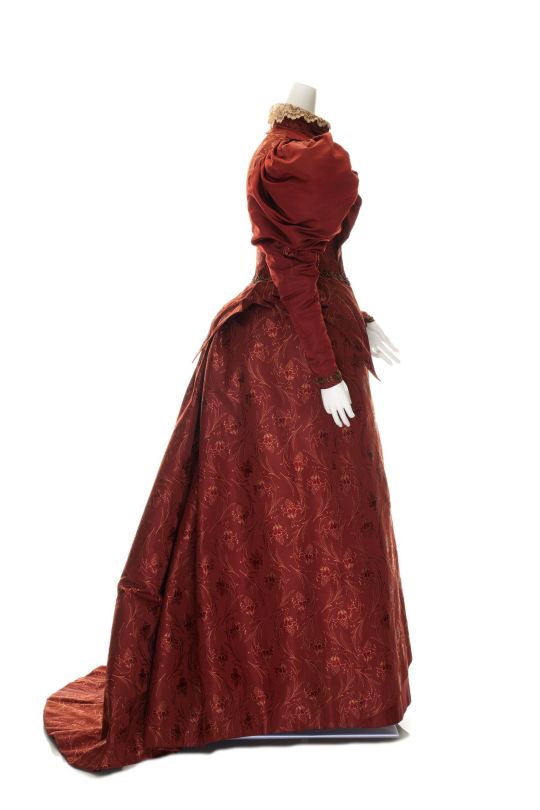
• Day Dress.
Date: 1890-1900
Designer/Maker: David Jones Pty Ltd. (Sydney, New South Wales, Australia); Owner: Mrs. Amy Grimley (Sydney, New South Wales, Australia)
Medium: Silk brocade, faille, glass beads, sequins, metal.
#fashion history#history of fashion#dress#fashion#19th century fashion#19th century#19th century dress#early 20th century#day dress#red dress#david jones#amy grimley#1890#1900
1K notes
·
View notes
Text

Fireman's Coat
Late 19th Century to Early 20th Century
Japan
Japanese firemen's coats are reversible. When fighting fires, the coat was worn as shown, together with close-fitting trousers, a hood, and gloves. Saturated with water, these garments gave protection against flames. A bold, legible pattern on the back identified the fireman’s brigade. For festive occasions, the pictorial side faced outward. This coat shows the Toad Spirit offering to teach the robber Jiraya magic, provided he used it only to benefit humanity.
Denver Art Museum (Accession Number: 1999.265)
#coat#outerwear#fashion history#historical fashion#non western fashion#japanese fashion#late 19th century#early 20th century#turn of the century#1880s#1890s#1900s#1910s#denver art museum
1K notes
·
View notes
Text

La Vie Extraordinaire
Joseph Bernard
#can i be there#idyllic#art#painting#art history#fashion#portrait#french art#19th century#early 20th century#animals
458 notes
·
View notes
Text
Etiquette of the Edwardian Era and La Belle Époque: How to Dress
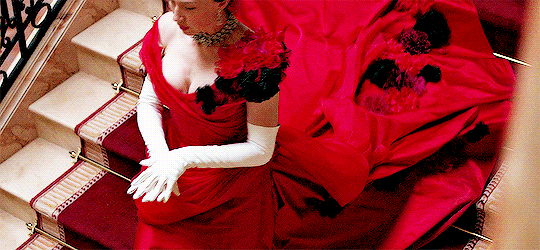
This is a new set of posts focusing on the period of time stretching from the late 19th century to the early 20th Century right up to the start of WWI.
I'll be going through different aspects of life. This series can be linked to my Great House series as well as my Season post and Debutant post.
Today will be focusing on the rules of clothes with this time period.
A Cut for Every Occasion
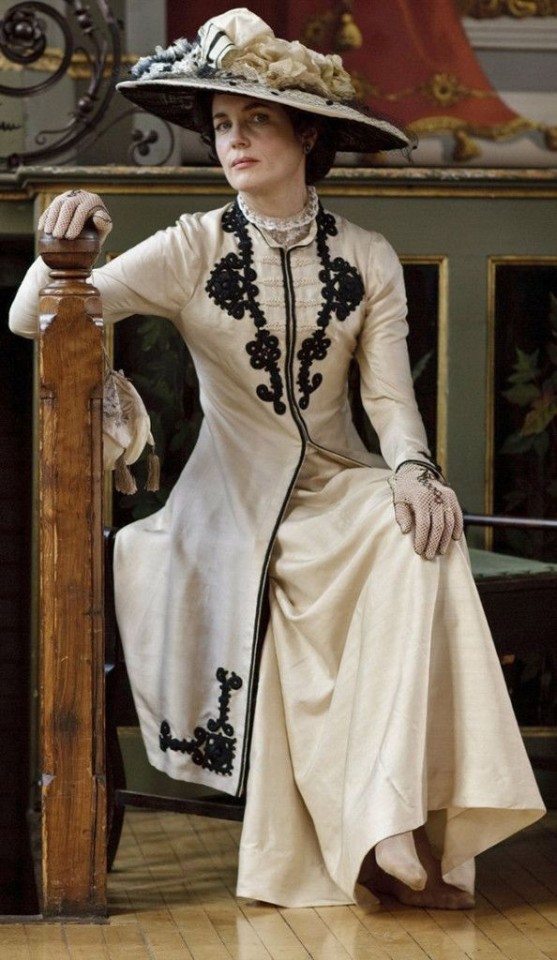
As you may know, the wealthy elite and their servants lived extremely regimented lives and every aspect was governed by careful rules. They would be expected to wear the right outfit at the right time, every minute of the day. Any misstep would be noticed at once and be subject to scruntiny.
In the circles of the elite, one would be expected to change for every occasion. One simply wouldn't wear the same outfit they've been lying around the house in to attend tea at somebody's house. Fashion in this era was dictated by the clock and by the event diary of the wearer.
Ladies

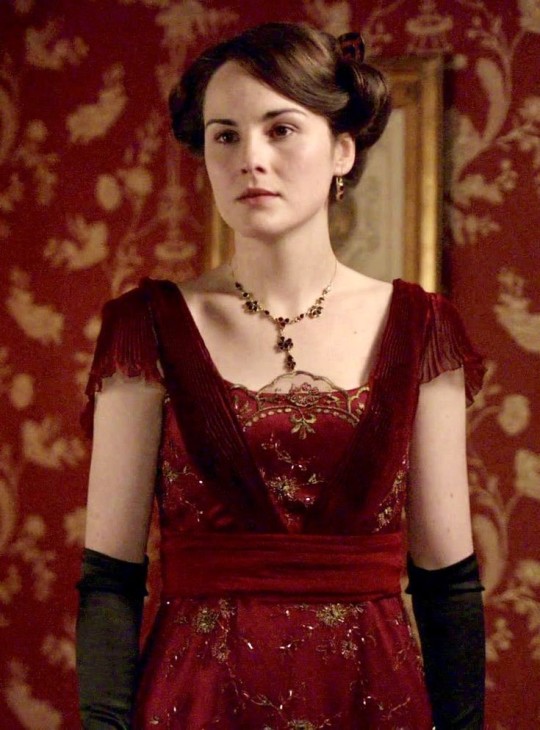
Women of the upperclass would be expected to change at least six times a day. When she would rise for a morning of repose around the house, she would simply wear a house gown or a simple blouse and skirt. If planning a morning stroll, she would change into a walking suit which is a combination of blouse, skirt and jacket along with her hat usually of tweed. If running errands or paying a visit to friends, she would wear another walking suit. If riding, she would wear a riding habit and a hat. If hosting tea or taking tea in her own home, she would change into a tea gown with is a lighter more airier gown more comfortable for chilling in. If attending a garden party, one wears a pastel or white formal day gown accompanied by a straw hat and gloves. For dinner, she would change into an evening gown which would be more elaborate and show off a little more skin than her day wear. After dinner and ready for bed, she would change into her nightgown.
Female servants had an easier time of it. A housekeeper and lady's maid would simply wear a solid black gown for the entire day. A cook and kitchen maids would wear a simple day dress for working with an apron. Housemaids would usually wear a print dress with an apron and cap, changing into the more formal black and white attire you would associate with a maid.
Gentlemen

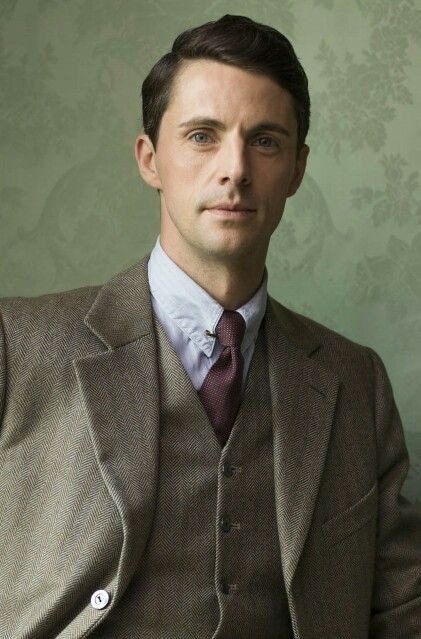
The gentlemen had an easier time but they too were subject to changes throughout the day. Men were expected to wear a suit. The most popular day time suit was a sack suit. These were comprised of plain and loose fitting jackets, worn over a starched shirt with a high collar, waistcoat and straight trousers with ironed creases. These suits were exclusively wool with cheaper ones made of a wool and cotton blend. Grey, green, brown, navy were usual but sine younger men preferred louder colours such as purple which was a trend for a time in the 1910s. These suits were worn about the house or in the city accompanied by a coat. Men would change into tweed if shooting or walking. For garden parties, a gentleman would wear a light coloured suit, usually white and a straw hat. For dinner, a man had two choices: his tails or his dinner jacket. A dinner jacket was for less formal suppers say if dining at home. This was a collection of a jacket, trousers, waistcoat, a bow tie, a detachable wing-collar shirt and black shoes. Lapels of these jackets were edged with silk or satin. Tails were worn at a formal dinner party, at White Tie events. This was made up of a tailcoat, white piqué waistcoat, a starched dress shirt with a pique bib and standing wing collar with a white bow tie. Trousers were lined with trim to hide the seams.
Male servants were soared changing. Footmen would wear their livery around the clock which would resemble white tie to a certain extent or mimic court dress of palace servants. Butler's would wear a variation of a gentleman's evening suit throughout the day. When a male servant is dressed, he usually stays that way. However, a valet or a footman may be taken to pick up during shooting parties where they would wear tweed walking suits.
Jewellery
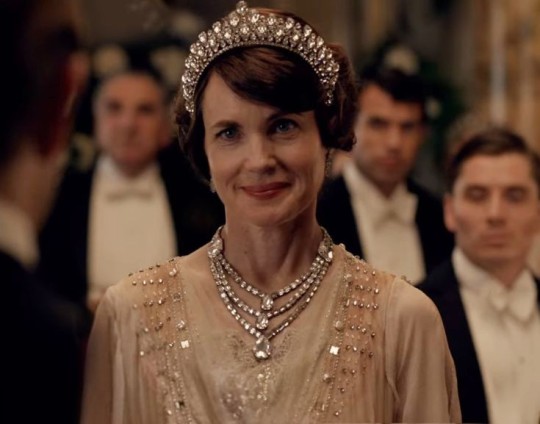
Jewellery was an important sign of status in society. Upperclass women of this time has access to untold caches of sparklers but there were rules concerning their use and meaning. Earrings were usually clip ons as women of high status would not pierce their ears. Simple, understated earrings were worn during the day with more ostentatious sets were worn in the evening time. Broaches were popular at this time, usually worn at the throat of a gown or blouse or walking suit or affixed on hats. Large stoned rings were worn over gloves while slender bands were worn under. Jewellery was intricate and understated amongst old money whole the nouveau riche went for chunkier stones and larger settings. Tiaras were only worn at White Tie events, held after six pm and almost never by unmarried girls. One would not wear a larger tiara than that most senior lady present. Men would wear tie pins, cufflinks and pocket watches to match any occasion be it for a jaunt on the town or at a formal evening party.
Hats
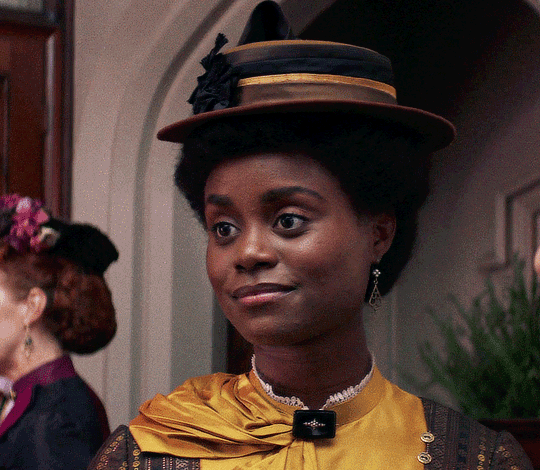
Hats were a staple in this period. Anybody respectable from any class wouldn't venture out of the door without a hat.
Men would wear hats when heading out but always remove them when entering a building, and never wear one without removing it for the presence of a lady. The bowler was seen as more a servant's headwear while a top hat was reserved for gentlemen. Flat caps would be only seen on gentlemen at shooting gatherings or in the country, they were popular among the common class for any informal occasion.
Women had more stricter rules concern hats. Hats for women were more a day accessory worn while out and about. A woman would not wear a hat in her own home even when entertaining and nor would any of the other female occupants if joining the gathering. A woman would not remove her hat when attending a luncheon or tea or any activity. Hats were held in place by a ribbon or sash tied under the chin or by a hat pin, which is essentially a large needle thrust through the hair. This was the period where women's hats became more ornate and rather large, leading to some critisism. Among servants, housekeepers and lady's maids would not wear a hat while indoors and working but a housemaid or cook or kitchen maid would cover their hair with a cap with housemaids changing into a more elaborate one come evening time. Male servants would not wear hats unless travelling or outdoors.
Gloves

Gloves are a staple in this period and worn only at the opportune time. Among servants, only footmen would wear gloves and usually only when serving. Butlers would never wear gloves. Female servants did not wear gloves.
Men did wear gloves, usually woollen or leather while outside or riding gloves when out on horseback.
Women wore gloves whenever outside. Day gloves were usually wrist length, with evening gloves stretching to the elbow. During dinner, evening gloves would be removed at the first course and laid across the lap, replaced at the last course when the ladies leave for tea and coffee after where the gloves are then removed again. Gloves are always worn when dancing and at the theatre or opera. If one is sitting in ones box and sampling some chocolate, one can remove their gloves for that.
Hair and Makeup
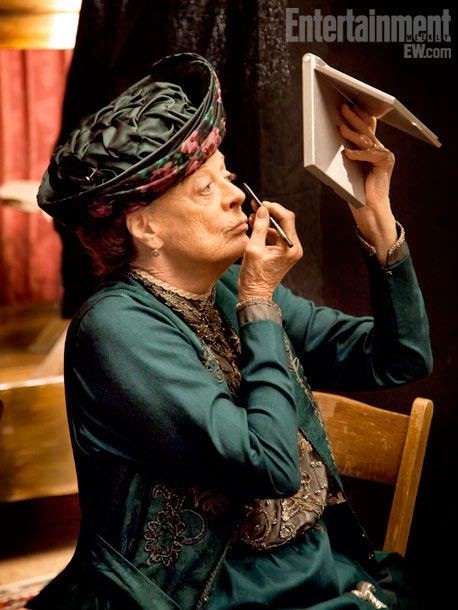
Make up was a no-no amongst the upper crust and for their servants in England and America, as it was seen as licentious but in France, the use of rouge was accepted. Perfume and cologne were acceptable but excessive use was frowned upon.
Hair was dressed by one's lady's maid. Bouffant updos were popular in this time period for married women. During the last years of this period, women began adopting the 'bob' but this was seen as radical and sometimes scandalous. Unmarried girls could wear their hair down, often with accessories like a bow to adorn their tresses. Servants would always tie up their hair and never be seen with it down or uncovered (though this depended on their job).
Men would comb their hair, slicking it back for dinner. Most men were clean shaven but if they wore beards, they were usually well groomed. Hair was kept short for grown men and teenagers but young boys may wear their hair longer whilst in the nursery.
#This bitch loooonnnnggg#Etiquette of the Edwardian Era and La Belle Époque series#Fantasy Guide#Early 20th Century#late 19th century#Great houses#writing#writeblr#writing resources#writing reference#writing advice#ask answered questions#writing advice writing resources#writers#Writing advice writing references#Writing references#Historical fiction#1900s#1890s#Fashion
574 notes
·
View notes
Text

#i know these outfits aren't like super comparable#but my mans on the right is chilling so hard i simply could not resist making this a poll#historical fashion polls#fashion plate#fashion poll#historical dress#historical fashion#dress history#fashion history#19th century#19th century fashion#mid 19th century#early 19th century#19th century dress#1830s fashion#1830s dress#1830s
216 notes
·
View notes
Text
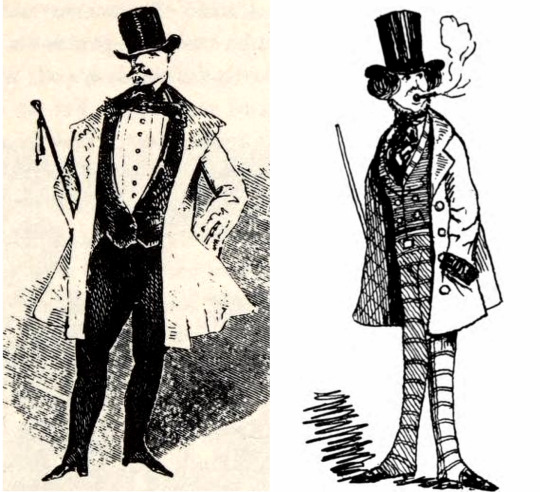
At left, the type of 1840s man that many people want, looking dashing in his evening costume and with the fashionable barrel chest and defined waist of his breed.
At right, a more typical example of the 1840s man that you will find at discount prices: note the striped trousers, huge paletot coat, and cigar.
This is the difference that proper vetting of your 19th century man can make! Of course, many people are happy with the Gent on the right and will gladly indulge his fashion habits and smoking.
#is the 19th century man okay#mid 19th century#1840s#archibald henning#punch magazine#victorian#early victorian era#fashion#class#gents
173 notes
·
View notes
Text
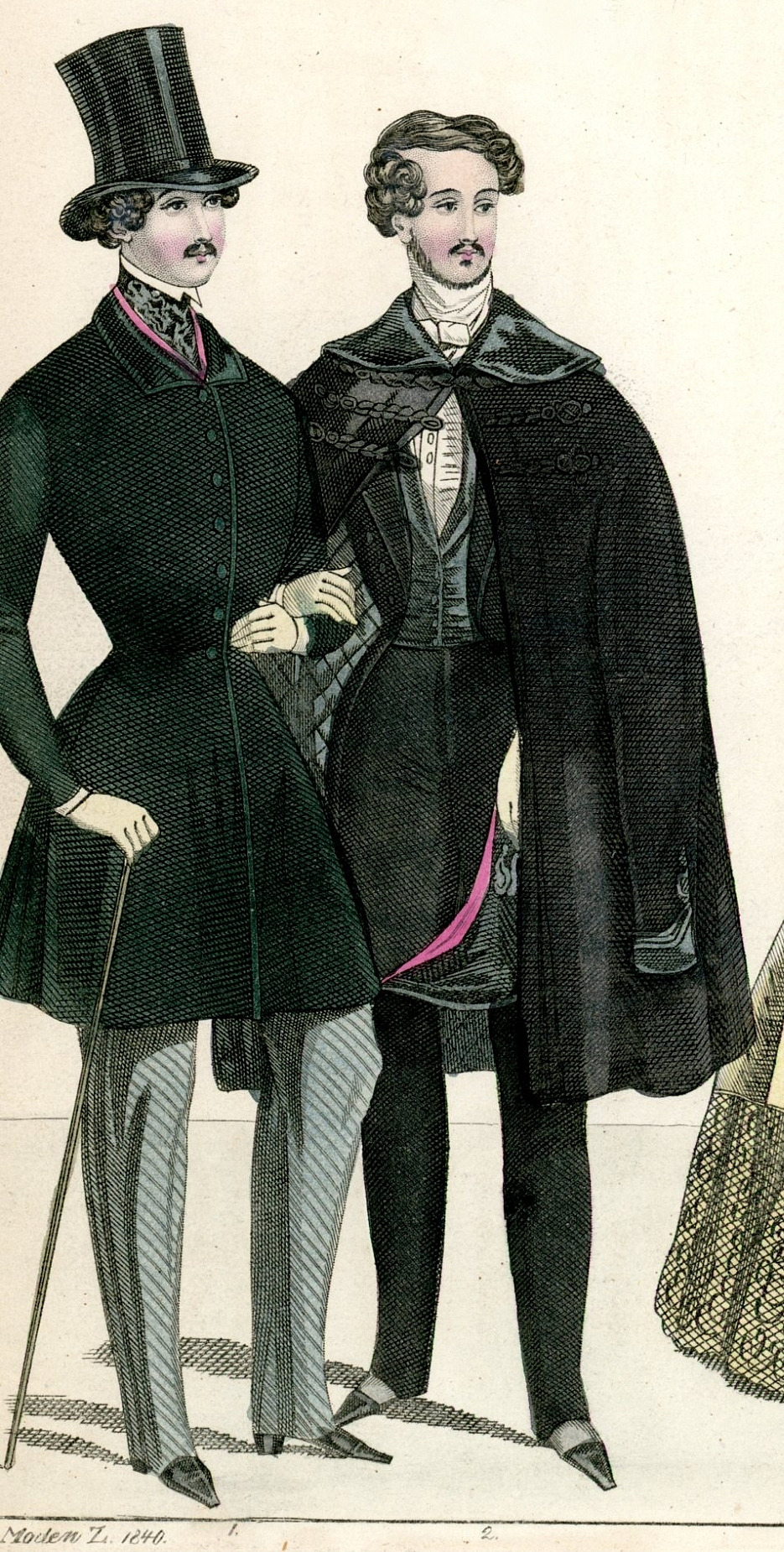
Fashion plate detail: Winter 1840.
The man on the extreme left wears a frock coat and top hat suitable for daywear while his companion is dressed in formal evening wear: tailcoat, white cravat, and Brandenberg coat worn over the shoulders like a cape. He carries a chapeau bras.
Historic Textile and Costume Collection, the University of Rhode Island.
#Eighteen-Forties Friday#1840s#fashion history#historical men's fashion#fashion#evening dress#frock coat#victorian#early victorian era#fashion plate#19th century male bonding#neglecting my blogs but of course i have 1840s men for days#dress history
186 notes
·
View notes
Photo
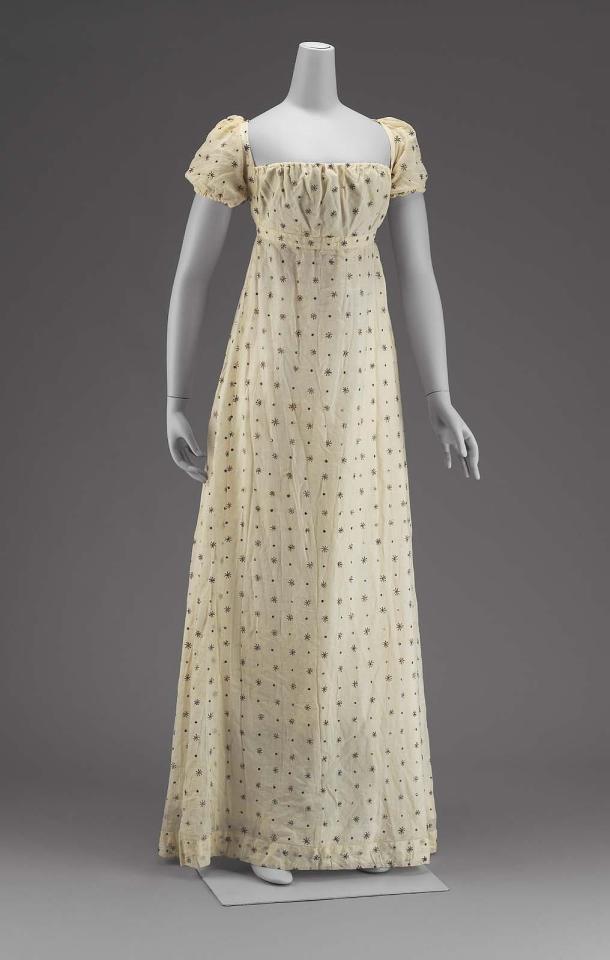
White mull dress (American, early 19th century).
Cotton mull with silver flat metal embroidery.
Image and text information courtesy MFA Boston.
43 notes
·
View notes
Text

Daguerreotype of a gentleman with a serious expression and a fantastically unserious furry top hat, c. 1850s
#I want to stroke his furry stovepipe and it’s probably more obscene that I don’t mean that as a euphemism#I mean LOOK AT IT! I am in awe#early top hats (aka stovepipe hats) WERE made of fur—ideally beaver—but felted and processed to smoothness#not this amazing fuzzy wuzzy wtfuckery#19th century#1800s#1850s#1850s fashion#19th century fashion#men's fashion#menswear#historical fashion#fashion history#19th century photography#daguerreotype#19th century men#vintage men
232 notes
·
View notes
Text

Antonio de la Gándara (French, 1861-1917) • Portrait de Madame Louisa de Mornand, également connu sous La Femme au chien (Women with a Dog) • 1907
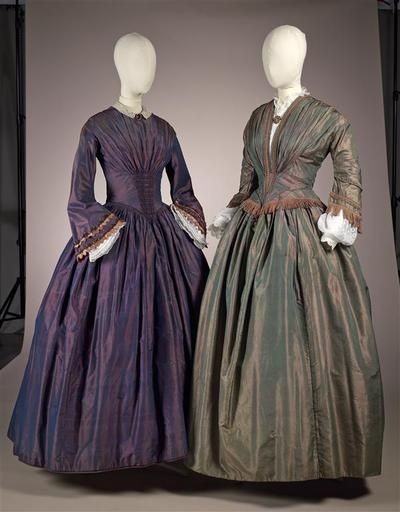
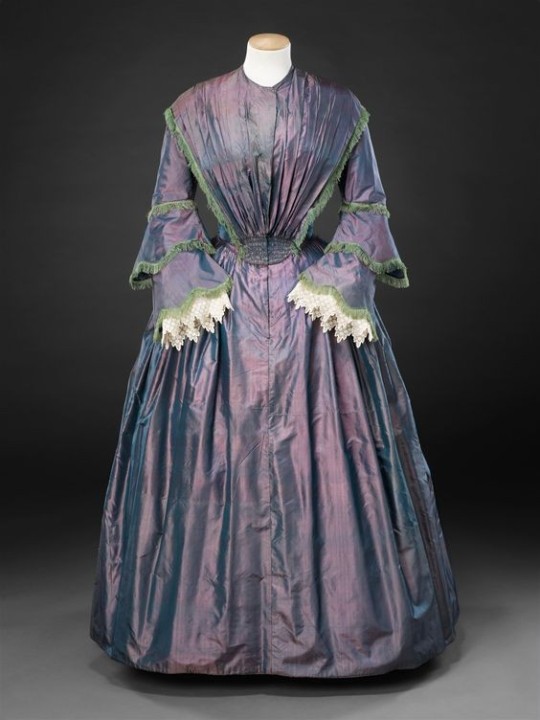
Left: Shot silk dresses
Right: Day dress c. 1850′s • John Bright Historic Costume Collection

Shot silk is a fabric which is made up of silk woven from warp and weft yarns of two or more colours producing an iridescent appearance. – Wikipedia
#art#painting#art history#history of fashion#fashion history#art & fashion#antonio de la gándara#french artist#portrait#shot silk#historic dresses#fine art#1850s fashion#early 20th century european art#the resplendent outfit blog#19th century fashion#victorian fashion#belle epoque artist
50 notes
·
View notes
Text




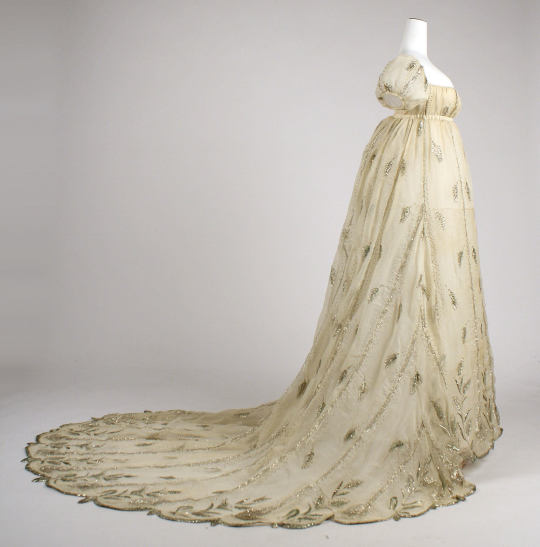
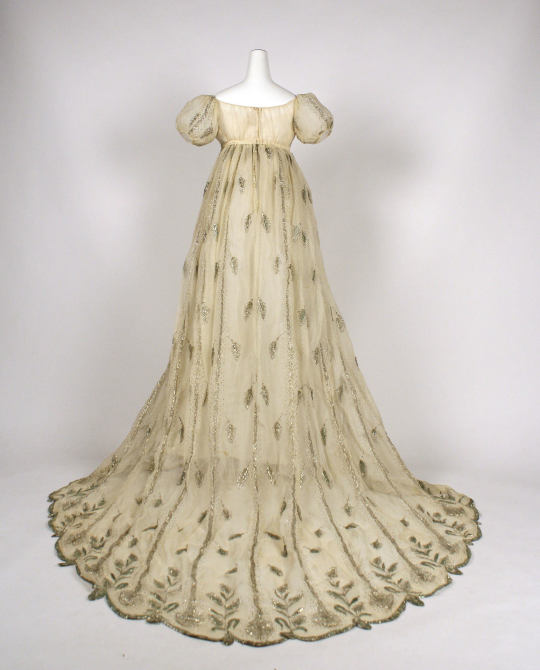
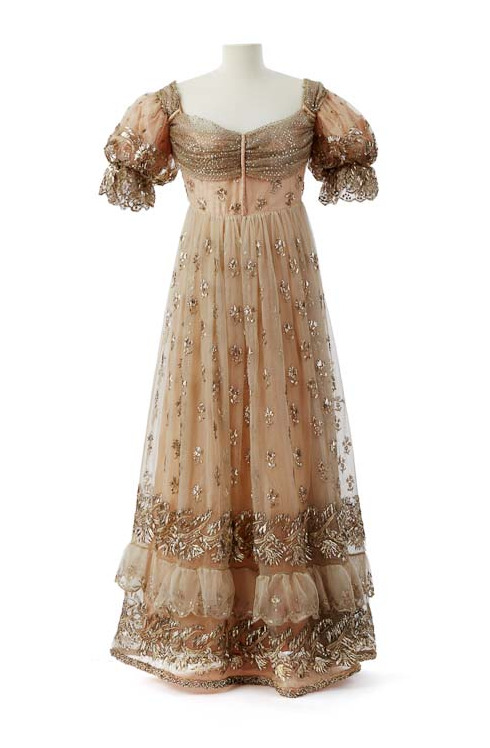

Some of my favorite Empire Style dresses from France in the early 19th century
Town dress with chemisette owned by Empress Josephine, First Empire, circa 1804-1809 (Château de Malmaison) / Dress, 1805-1810 (The Met) / Evening Dress, 1805-1810 (The Met) / Court dress attributed to Empress Josephine, after 1810 (Château de Malmaison)
#empire style#french empire#first french empire#fashion#french fashion#napoleonic era fashion#napoleonic era#empress josephine#early 19th century#historical fashion#malmaison#regency#french art#pretty#dresses#the met#romanticism#neoclassical
794 notes
·
View notes
Text
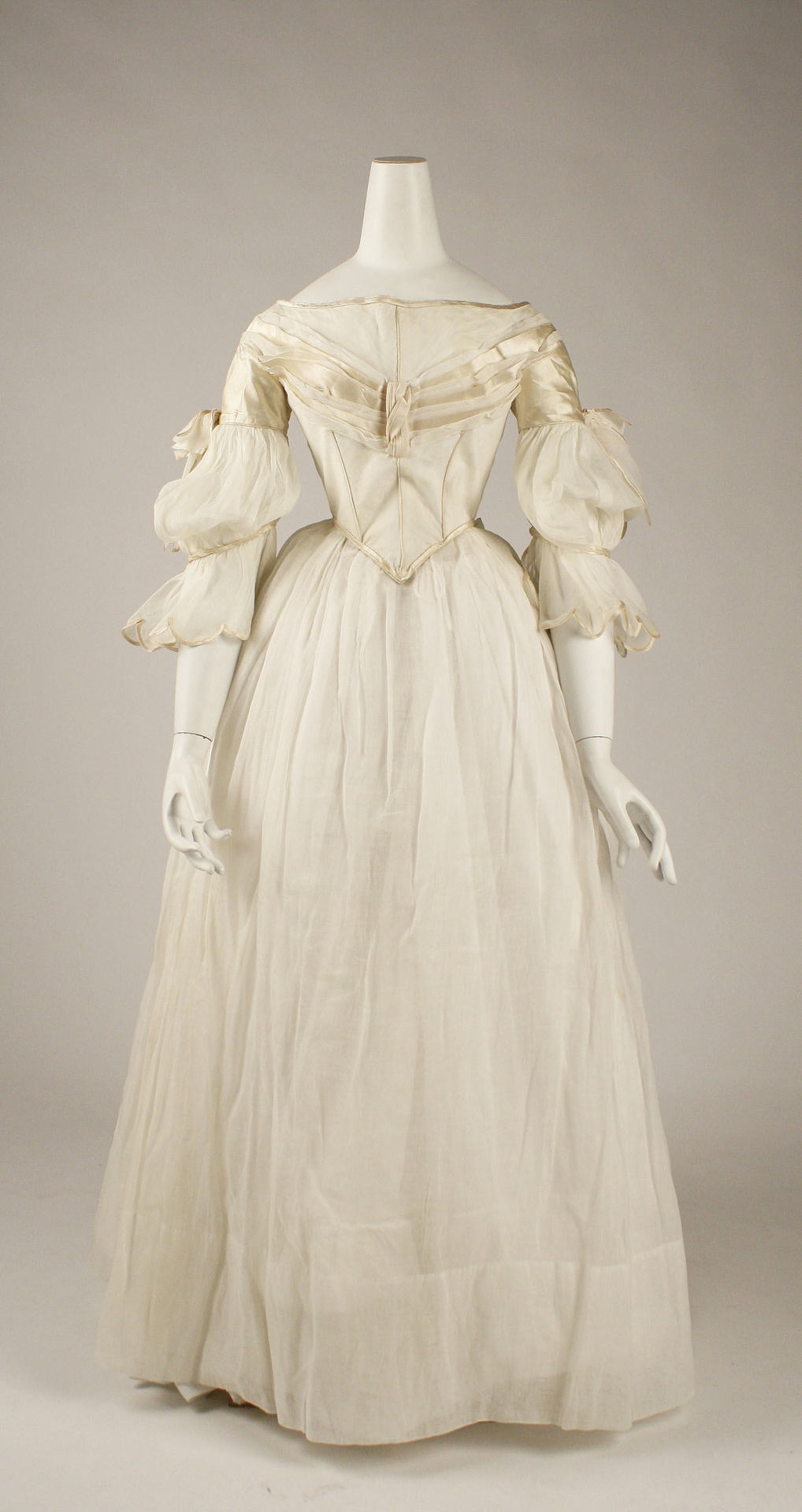

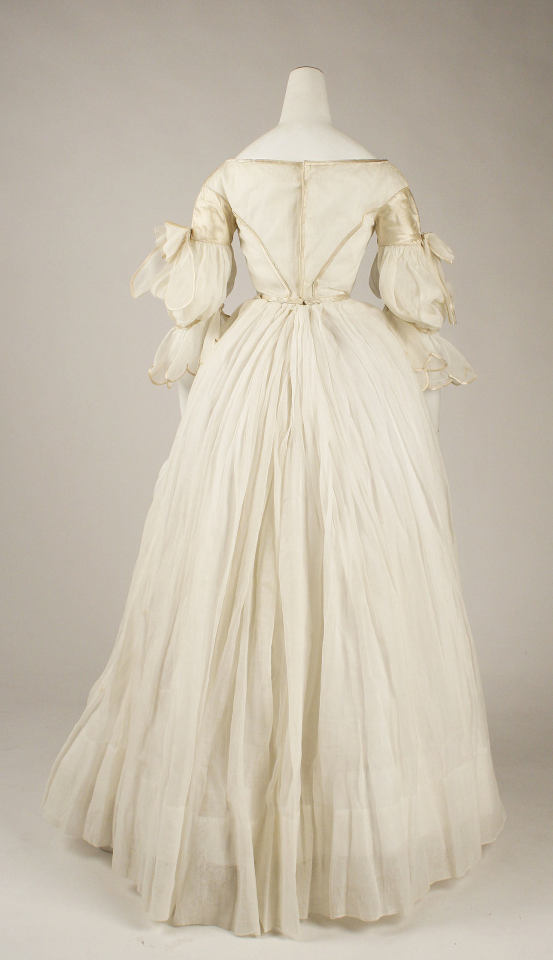
• Evening dress.
Date: ca. 1840
Medium: Cotton, silk
#fashion history#history of fashion#dress#fashion#19th century fashion#19th century#19th century dress#early 19th century#evening dress#ca. 1840
2K notes
·
View notes